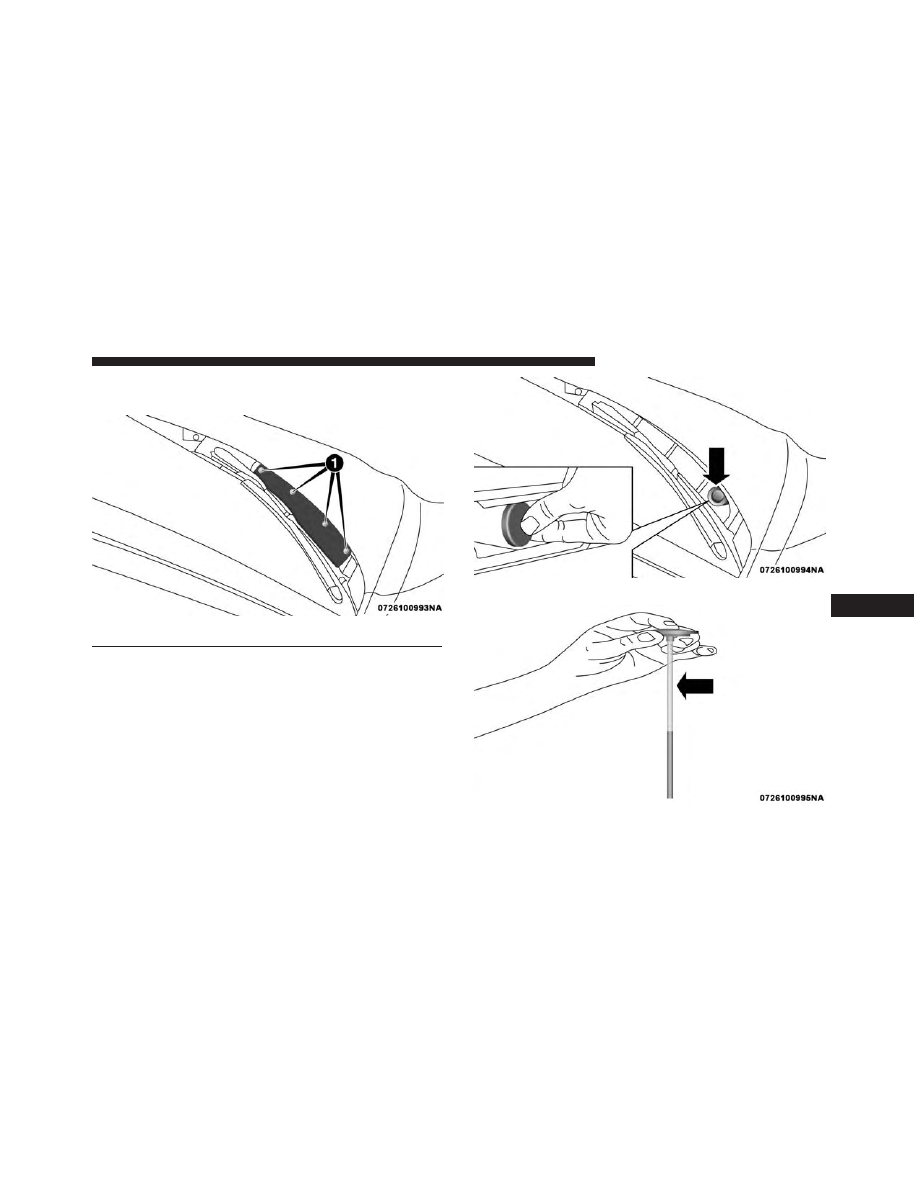Alfa Romeo 4C (2018 year). Manual - part 13

2. Loosen the four screws using the supplied screw-
driver. Remove the washer solvent protection panel.
3. Release the plug from the opening.
4. Leaving the plug close to the opening, put a finger on
the central hole in the plug and remove it: the level
can be seen on the control pipe due to capillarity.
1 — Screw Locations
Washer Solvent Plug
Washer Solvent Dip Stick
8
SERVICING AND MAINTENANCE 197